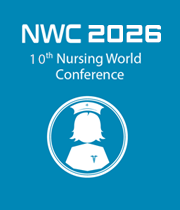Title : Prevalence of nomophobia among university students in Oman
Abstract:
c
Background: Nomophobia “no mobile phone” and phobia” is a pathological fear of being out of contact with a mobile phone, has no mobile networks, or has insufficient balance or battery. New technologies have become an integral part of our lives. Rapidly spreading all over the world, smartphones and their applications now play a key role in social connections, expression, information sharing, and achievement development. Smartphones have become essentials rather than accessories, due to their capacity to perform many tasks with features including advanced operating systems, touch screens, and internet access . Students at Sultan Qaboos University (SQU) Oman, use communication technologies to regularly update on the program in which they are enrolled, as well as completing assignments and participating in course activities. These technologies have become essential to student life and may lead to modified behaviors. To our knowledge, limited literature in the Arab world, particularly in Oman, has addressed the pattern of use of smartphones and potential risk for nomophobia among students, particularly as it may influence academic performance . This study has been conceptualized to investigate the pattern of smartphone use and the extent of nomophobia among SQU students, and any correlation with academic performance.
Purpose of the study: To determine the prevalence of nomophobia, demographic factors affecting nomophobic behaviors, and the relationship between nomophobia and academic performance among university students in Oman.
Methods: A descriptive correlational study design was chosen to describe the prevalence of nomophobia among SQU students. A convenience sampling technique was used to select 735 students based on defined inclusion criteria. A self-report instrument was used to address the research questions, divided into two sections: demographic data, and the Nomophobia Questionnaire . This will take around 25 to 30 minutes to fill the questionnaire. The demographic data section had three parts. The first assessed sociodemographic data such as age, gender, marital status, living arrangements, and habits. The second asked about academic information such as grade point average, type of enrolled program, and academic year. The third assessed each student’s pattern of mobile use and associated behaviors. Nomophobia was identified using a self-report instrument, the Nomophobia Questionnaire, which includes 20 Likert scale items rated from 1 (“strongly disagree”) to 7 (“strongly agree”). Descriptive analysis and a Pearson correlation statistical test were used to determine the possible relationship between nomophobia and academic performance.
Results: The prevalence of nomophobia among students was 99.33%, most with a moderate level of nomophobia. Students with severe nomophobia reported weak academic performance (p=.706), but this was not statistically significant.
Conclusion: Findings showed evidence of an association between weak academic performance and severe nomophobia, which was not statistically significant. No significant association was found between nomophobia and academic year, but first-year students reported lower levels of nomophobia than others.The study findings clearly demonstrate the effect of smartphone use among students. Academic administrators should sensitize about the potential adverse effects of smartphone usage in the classroom and on campus, and develop policies on how to use smartphones constructively in the study context.



